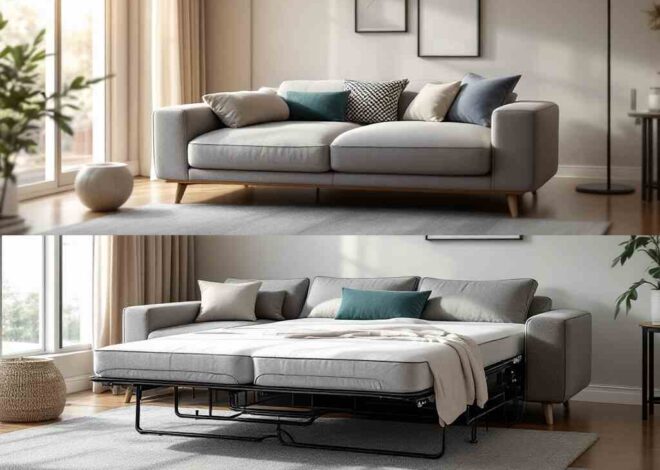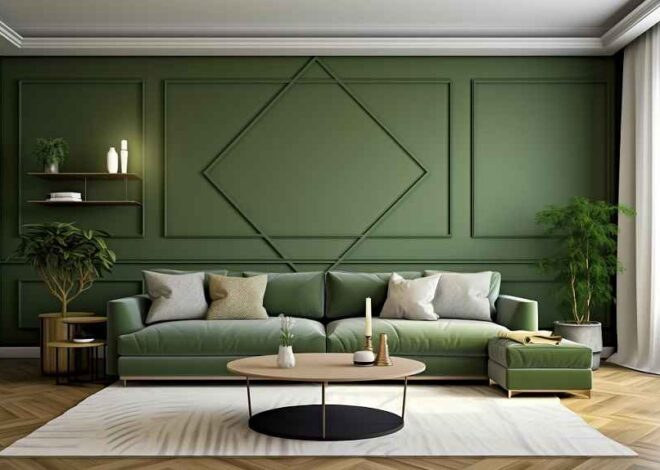
How to Design a Bedroom for Better Sleep?
A good night’s sleep is crucial for both physical and mental health. However, many people struggle to get quality sleep regularly. One factor that can significantly impact sleep is the design of your bedroom environment. Optimizing your bedroom for sleep can help you fall asleep faster, sleep more soundly, and wake up feeling refreshed. This article will discuss the key elements of designing a bedroom for better sleep.
Understanding the Basics of Bedroom Design for Better Sleep
A sleep-friendly bedroom design removes stimuli that disrupt sleep and incorporates elements that promote relaxation. The main components to focus on are lighting, colour scheme, furniture, textures/patterns, and clutter control. It’s also important to consider your personal sleep habits and preferences. An ideal sleep-promoting bedroom provides a quiet, cool, and comfortable environment that helps your mind and body relax at the end of the day.
Key Elements of a Sleep-Conducive Bedroom Design
- Lighting – Use soft, warm lighting from lamps or smart bulbs. Avoid bright overhead lights.
- Colour Scheme – Stick to cool, calming colours like blues, grays, and greens.
- Furniture – Invest in a high-quality mattress and bedding. Choose nightstands and dressers that provide storage.
- Textures & Patterns – Incorporate soft, cozy textures and minimal patterns.
- Clutter Control – Declutter regularly and use storage solutions to maintain tidiness.
Lighting for Better Sleep
Light exposure, especially from screens, before bed, can negatively impact sleep. Here’s how to use lighting design to create an optimal sleep environment:
Types of Lighting
- Natural Light – Allow sunlight in through windows during the day. Install blackout curtains to make the room dark at night.
- Artificial Light – Use warm light bulbs around 2700-3000K. Avoid cool-toned lights.
- Dimmable Lighting – Install dimmer switches and smart bulbs to control brightness.
Lighting Tips for Better Sleep
- Avoid bright overhead lights starting 2 hours before bedtime.
- Use small lamps with warm bulbs to provide soft illumination.
- Consider smart lighting systems that dim automatically at bedtime.
- Eliminate all light sources and use blackout curtains for maximum darkness.
Colour Scheme for Better Sleep
The colours in your bedroom can impact your quality of sleep. Here’s how to choose an optimal colour scheme:
How Colors Affect Sleep
- Calming Colors – Blues, greens, purples, and grays create a relaxing atmosphere.
- Stimulating Colors – Reds, oranges, and yellows are energizing and disrupt sleep.
Best Colors for Sleep
- Soft Blues – Blue is associated with calmness and serenity. Opt for lighter shades.
- Pastel Colors – Light pinks, greens, and violets promote relaxation.
- Neutral Colors – Whites, tans, and grays make spaces feel airy.
Tips for Incorporating Color
- Use cool-toned colours for major elements like walls, bedding, and furniture.
- Add in pops of warmer accent colours through decorative pillows, art, and accessories.
- If your bedroom gets a lot of natural light, consider deeper, more saturated hues.
- For bedrooms with little natural light, stick to light, ethereal colours.
Furniture for Better Sleep
Choosing the right furniture for your bedroom is key to getting restful sleep.
Bedroom Furniture Considerations
- Mattress – Replace old mattresses. Choose a comfortable mattress suited to your sleep position.
- Bed Frame – Select a quiet, sturdy frame with or without storage.
- Nightstand – Have nightstands with drawers on each side of the bed for storage.
- Dresser – Include a dresser or chest of drawers for clothing storage.
- Desk and Chair – Incorporate a desk and chair if you need a workspace in your bedroom.
Furniture Buying Tips
- Invest in a high-quality mattress and bedding that you find comfortable. This is the most important piece.
- Opt for solid wood or metal bed frames without squeaks. Upholstered headboards absorb sound.
- Choose nightstands with drawers, shelves, and charging stations for organization.
- Select a dresser or chest that fits your storage needs and matches your decor.
- If adding a desk, choose one with drawers and the right work surface area for you.
Textures and Patterns for Better Sleep
Using cozy textures and minimal patterns is another way to create a relaxing sleep environment.
How Textures and Patterns Affect Sleep
- Soft Textures – Satin, flannel, and velvet bedding feel soothing.
- Textured Patterns – Busy patterns and rough textures overstimulate.
Best Textures & Patterns for Sleep
- Soft Fabrics – Choose smooth, lightweight cotton, linen, or silk.
- Natural Materials – Incorporate wood, stone, rattan, and other natural elements.
- Minimal Patterns – Opt for subtle stripes or tone-on-tone prints.
Tips for Incorporating Texture & Pattern
- Select bedding, throws, and pillows in soft, smooth fabrics.
- Add warmth with layers of natural fibre rugs and blankets.
- Use solid-coloured or subtly patterned curtains and furniture upholstery.
- Accent with organic elements like woven baskets, ceramic vases, and real plants.
Clutter Control for Better Sleep
Clutter negatively affects sleep by causing stress and anxiety. Here are tips for maintaining a tidy bedroom:
Importance of a Clutter-Free Bedroom
- Reduces Stress – Visual clutter overstimulates the mind, making it hard to relax.
- Improves Sleep Quality – A clean space allows your body to unwind, signalling it’s time for sleep.
Tips for Controlling Clutter
- Use Storage Furniture – Nightstands, dressers, ottomans, and under-bed storage hide clutter.
- Declutter Regularly – Sort through and remove unnecessary items every few months.
- Maintain Daily & Weekly Routines – Make your bed every morning. Put items away before bed.
Conclusion
Optimizing your bedroom for better sleep involves considering lighting, colour, furniture, textures, and clutter. Create a quiet, cool, and comfortable environment free of disruptive stimuli. Invest in a high-quality mattress and bedding. Stick to a cohesive colour scheme of blues, grays, and greens. Choose furniture that maximizes comfort and storage. Incorporate soft, natural textures and minimal patterns. Maintain clutter-free spaces. With these design tips, you can transform your bedroom into a relaxing oasis for deep, restful sleep.


